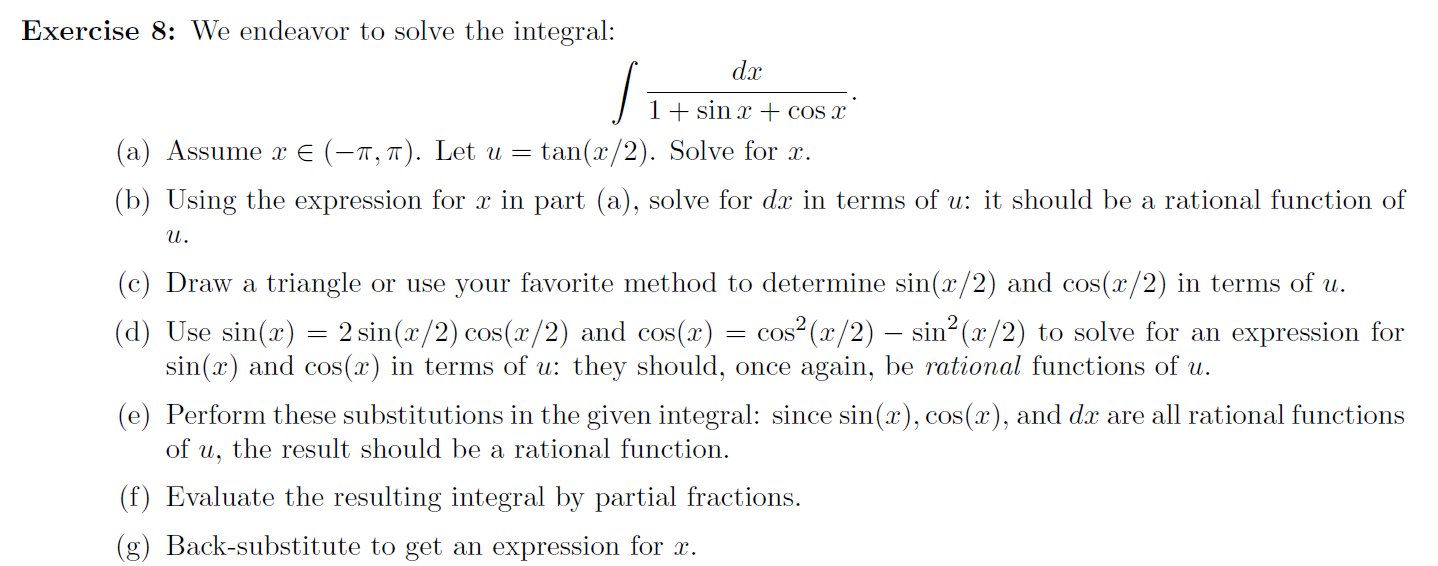Exercise 8: We endeavor to solve the integral: dx 1+ sin x + cos x (a) Assume x E (-n, 7). Let u = (b) Using the expression for x in part (a), solve for dr in terms of u: it should be a rational function of tan(x/2). Solve for x. и. (c) Draw a triangle or use your favorite method to determine sin(x/2) and cos(x/2) in terms of u. cos² (x/2) – sin² (x/2) to solve for an expression for (d) Use sin(x) = 2 sin(x/2) cos(x/2) and cos(x) sin(x) and cos(x) in terms of u: they should, once again, be rational functions of u. (e) Perform these substitutions in the given integral: since sin(x), cos(x), and dx are all rational functions of u, the result should be a rational function. (f) Evaluate the resulting integral by partial fractions. (g) Back-substitute to get an expression for x.
Angles in Circles
Angles within a circle are feasible to create with the help of different properties of the circle such as radii, tangents, and chords. The radius is the distance from the center of the circle to the circumference of the circle. A tangent is a line made perpendicular to the radius through its endpoint placed on the circle as well as the line drawn at right angles to a tangent across the point of contact when the circle passes through the center of the circle. The chord is a line segment with its endpoints on the circle. A secant line or secant is the infinite extension of the chord.
Arcs in Circles
A circular arc is the arc of a circle formed by two distinct points. It is a section or segment of the circumference of a circle. A straight line passing through the center connecting the two distinct ends of the arc is termed a semi-circular arc.
parts d,e,f

Trending now
This is a popular solution!
Step by step
Solved in 5 steps with 5 images




